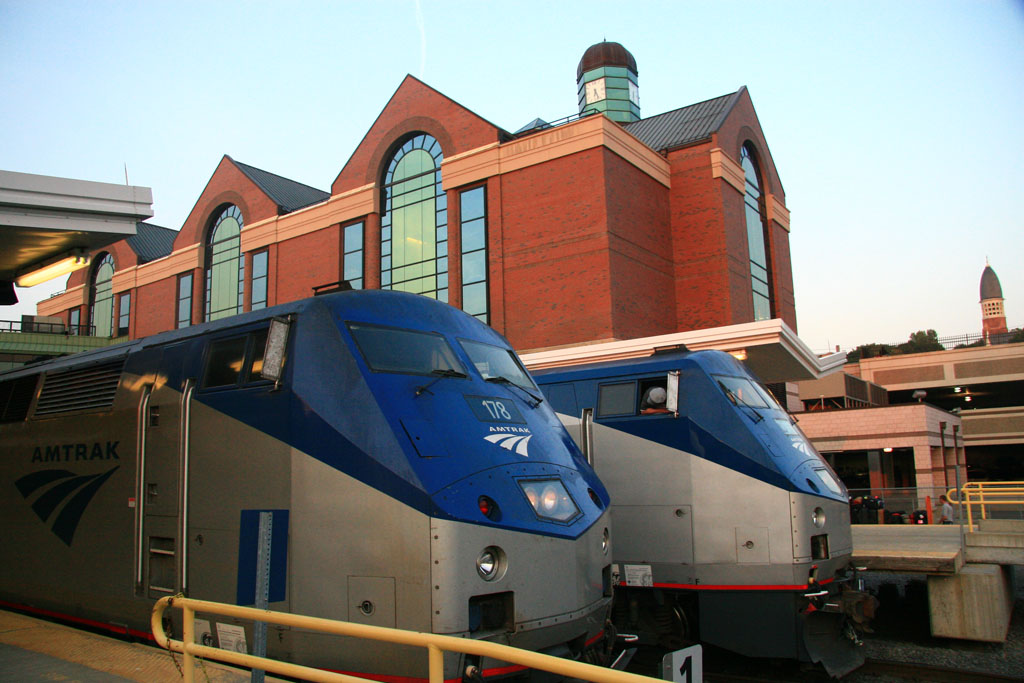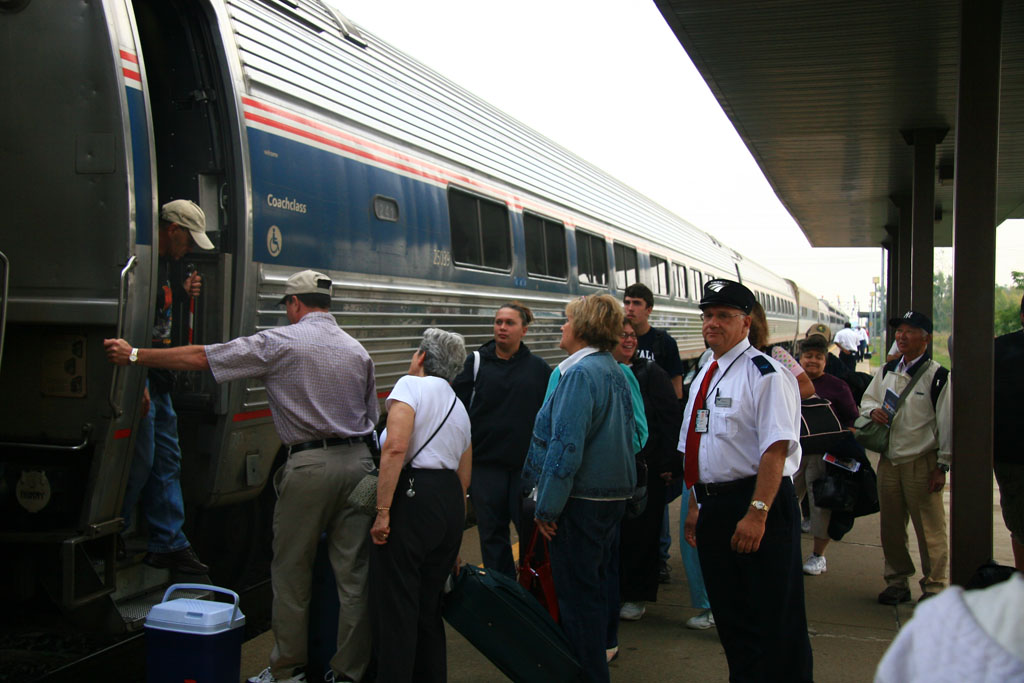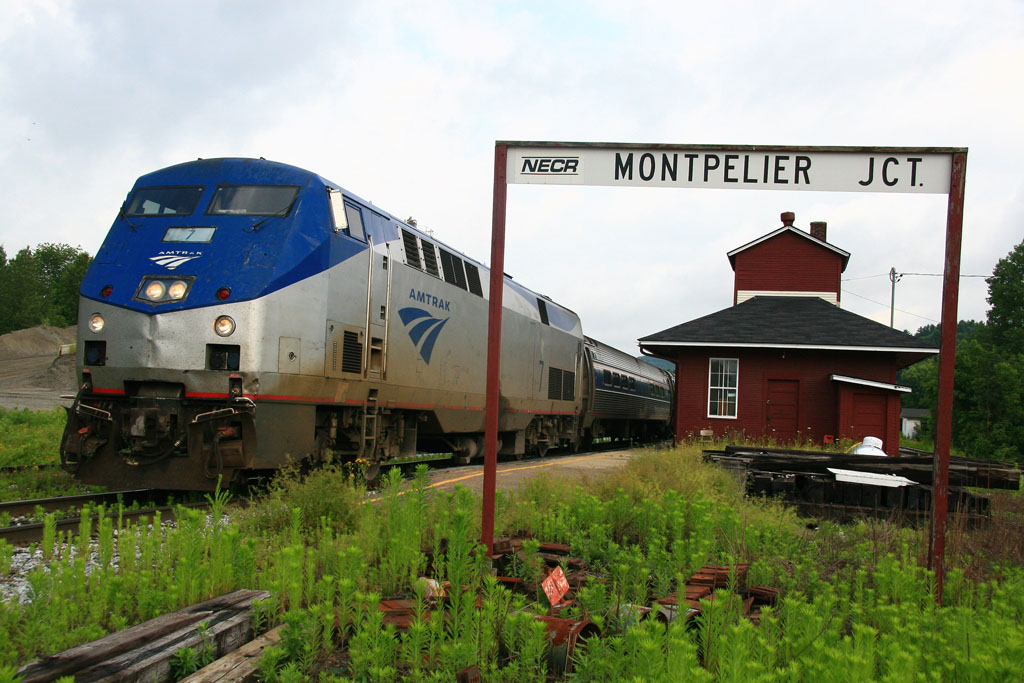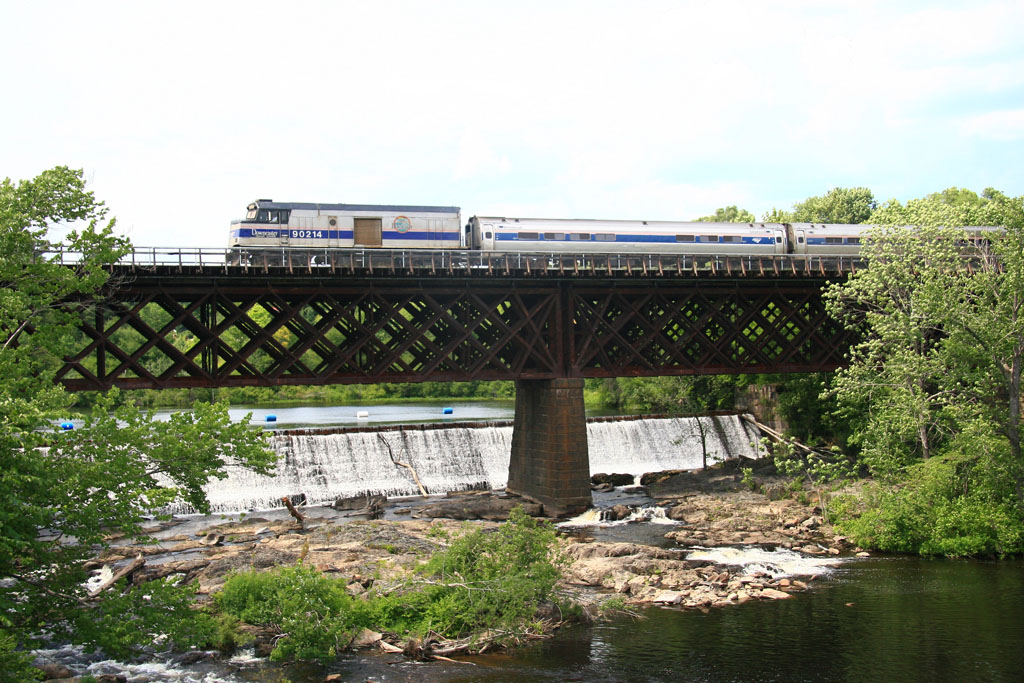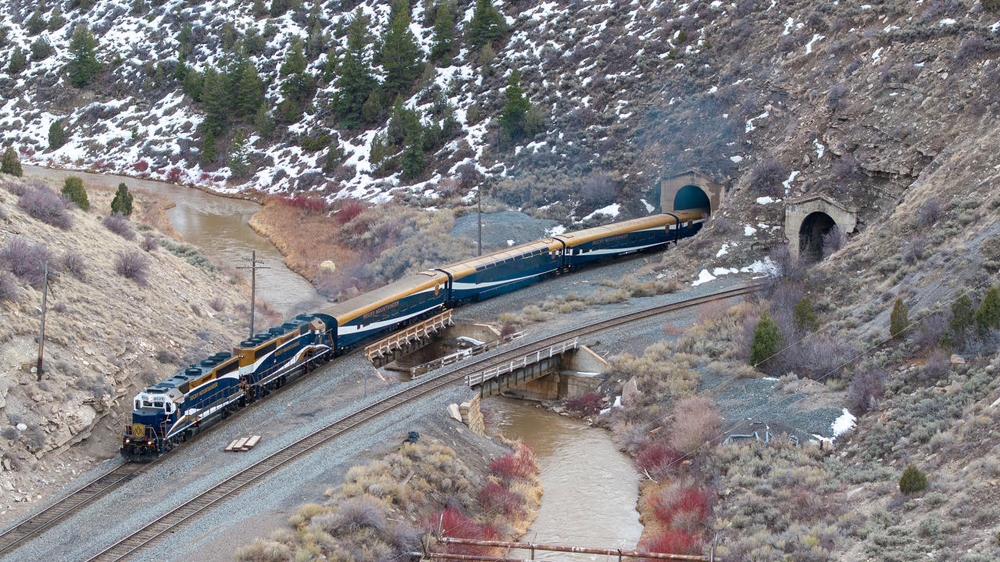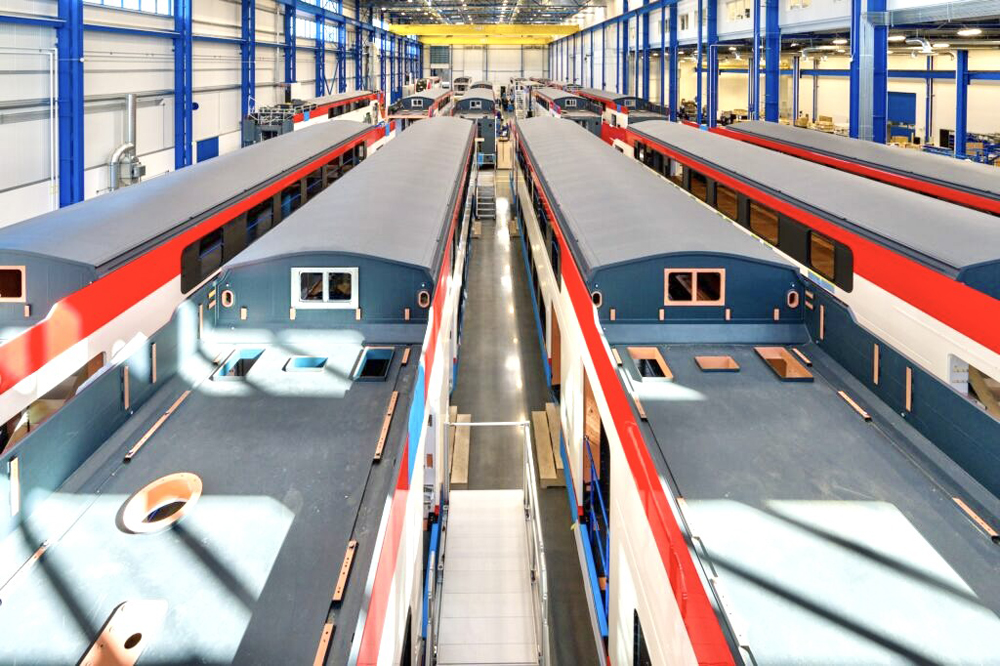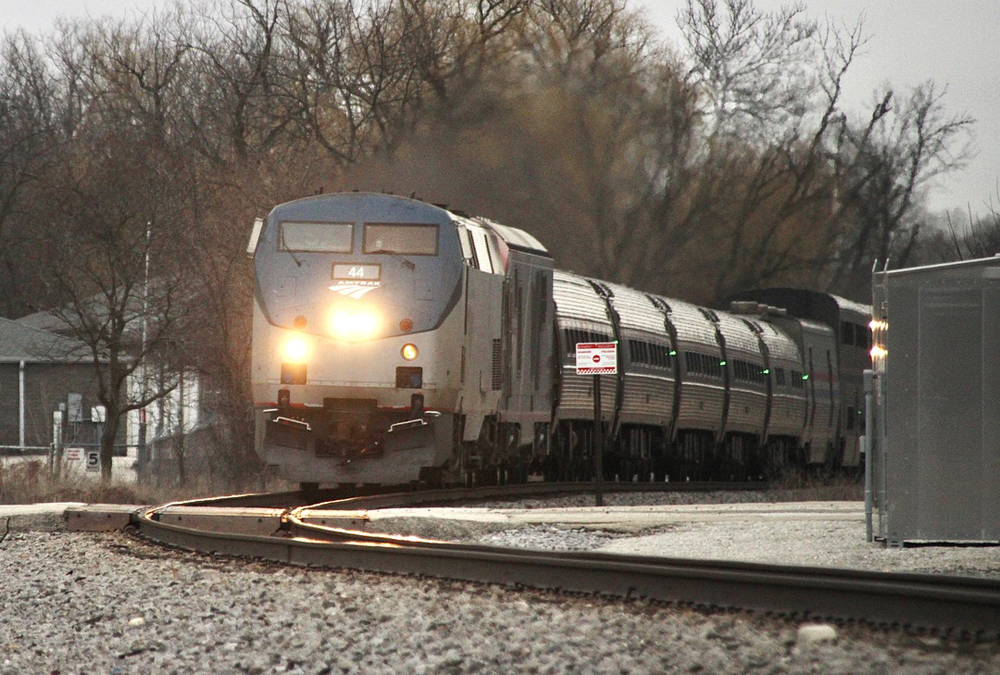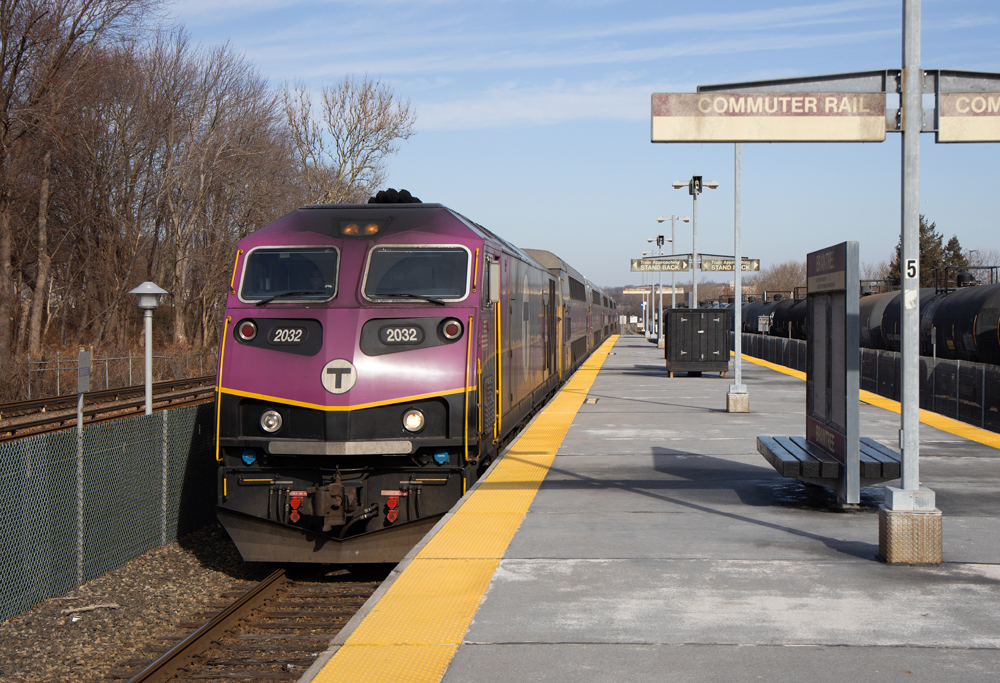The Corridor serves the Northeast well, and is the poster child for what other U.S. passenger rail corridors need to become. The success can be seen in the numbers: When it comes to flying or taking the train, 63 percent of travelers faced with that choice took Amtrak. After a slow roll-out of Acela Express service between New York Boston ten years ago, Amtrak is now carrying the same number of people as airlines between the two cities.
Indeed, the biggest problem these days is keeping the Northeast Corridor in a state of good repair.
Meanwhile, other heavily patronized Amtrak corridors are struggling with problems that can turn riders away: delays from freight congestion on the busy New York-Albany-Buffalo Empire Service; Amtrak’s Vermonter between Washington, D.C., and St. Albans, Vt., has a somewhat tortuous route through New England plagued by slow-speed tracks in Vermont, an awkward routing in Massachusetts that requires a backup move, and insufficient track capacity in Connecticut; meanwhile in Maine, a successful corridor cries out to be lengthened to reach more people.
These are the projects the high speed grant money will help. But it’s important to note that, except on the existing Northeast Corridor and Amtrak’s Philadelphia-Harrisburg Keystone Corridor, none of the projects will be truly “high speed.” Instead, they will improve 79-mph services. Given the Northeast’s comparatively small amount of funding, perhaps that’s the most anyone could ask for.
Of the $485 million in grant money released for projects in the Northeast, $112 million will go for improvements on the Northeast Corridor that Amtrak will supplement with $706 million of its own capital funds (also supplied by Uncle Sam).
Specifically, the $112 million in grant money will go complete the engineering and environmental work on a new Baltimore tunnel and a new BWI Airport train station. Other projects will advance track work in Rhode Island and support the construction of a new three-track bridge over the Hackensack River in Secaucus, N.J.
The new bridge is desperately needed, as Amtrak’s current swing bridge over the river is close to 100 years old, and on weekdays sees over 100 Amtrak trains and about 330 NJ Transit commuter trains – part of the busiest stretch of passenger rail trackage in the United States.
The biggest single chunk of money to come from the Northeast’s allocation was a $148 million grant to New York State to reduce passenger and freight congestion on CSX Transportation’s line between Albany and Buffalo, N.Y., used by Amtrak Empire Service corridor trains and the Lake Shore Limited to Chicago.
The money will fund seven projects that will build new track, upgrade signals and interlockings, and modernize grade crossing systems on this 300-mile stretch of trackage. In addition, the stations at Rochester and Buffalo (Depew) would be improved.
New York also got a $3 million grant to build three miles of second main track south of Saratoga Springs, N.Y., on Canadian Pacific’s main line to speed the journey of Amtrak’s New York-Montreal Adirondack and New York-Rutland, Vt., Ethan Allen Express.
Nevertheless, the money New York received amounted to merely a quarter of what it asked for. The state submitted grant applications totaling $565 million covering 38 different projects-all of them, the state claimed, were shovel-ready projects that could be completed within the two-year construction timeframe once materials arrived.
The greatest single benefit for New York will be the construction of a desperately needed second track between Albany-Rensselaer and Schenectady, the biggest bottleneck on the Empire Corridor. The $91.2 million project-fully funded by the grant money-will add a second track to 10 miles of CSX’s Hudson Subdivision between West Albany and Colonie, improve grade crossings, and upgrade the interlocking at the Schenectady station where trains to Rutland and Montreal diverge from the Empire Corridor.
The move will be a welcome relief for travelers who have suffered waits of up to 18 minutes at either station while oncoming trains traverse the single-track portion of the route.
Twelve Amtrak trains a day, traveling at speeds of up to 110 mph, use the trackage between Schenectady and Albany-Rensselaer, and eight trains a day run the whole length of the Albany-Buffalo corridor. Albany Amtrak’s Albany-Buffalo route was one of the poorest performing in the East, with on-time arrivals of just 42 percent in 2008, the state noted in its grant application.
West of Schenectady, Amtrak’s trains jockey for space on CSX Transportation’s main freight line between New York and Chicago, where 30-40 freight trains a day is not uncommon. The other improvements projects in the $148 million package will go relieving congestion and reducing bottlenecks on this part of the line. Among them:
• $6.2 million to upgrade highway-rail grade crossings between Scotia and Buffalo (Depew), N.Y.
• $12.4 million to add new crossovers and upgrade existing crossovers and signals
• $27.4 million for track and signal improvements in a 6 to 7-mile stretch between CSX’s DeWitt Yard and the Syracuse train station, in order to shift trains doing yard work at DeWitt off the mainline freight tracks. The project will also upgrade the passenger platform at Syracuse station
• $9.1 million to reconstruct the tracks and station platforms at Schenectady, N.Y., and rebuild part of the station
• $1.5 million for station improvements and upgrades to meet Americans with Disabilities Act requirements at Rochester, N.Y.
• $0.8 million for station improvements and upgrades to meet Americans with Disabilities Act requirements at Buffalo’s Depew, N.Y., station.
So what didn’t New York get? Mainly improvements needed for Amtrak trains on the commuter lines it uses out of New York City. The state submitted requests totaling more than $200 million to upgrade signals, grade crossings, bridges, stations, and interlockings on the line between New York City and Albany, which is owned by CSX Transportation north of Poughkeepsie, and owned the state south of Poughkeepsie (the starting point for Metro-North Hudson Line commuter service into New York).
Three different grants totaling $160 million-one-third of the entire Northeast region’s high speed allocation-will go to improving the route of one train: Amtrak’s Vermonter through New England, although the project will also benefit other Amtrak services in Connecticut.
The Vermonter carried 74,000 people in 2009, and was one of the only Amtrak corridor trains that year to show an increase in ridership, but in years passed it has been plagued by poor on-time performance (55 percent in 2008).
Connecticut was awarded $40 million to add 10.5 miles of double track to Amtrak’s line between New Haven, Conn., and Springfield, Mass. This 60-mile line has four stretches of single track, each one 8-10 miles long, which requires careful scheduling of the 12 Amtrak trains a day that use the line. (Amtrak operates it as an extension of its Northeast Corridor.) Freight trains run by Pan Am Railways and Connecticut Southern also use this trackage.
The money will double-track the route between New Britain (just north of the Meriden station) through Berlin to Newington, eliminating one of the line’s four single-track sections. Earlier in January, Connecticut approved the release of $26 million, as part of its share of the project.
The state has future plans to add commuter service to the southern leg between Hartford and New Haven, with trains running on 30-minute headways during rush hour. This project would pave the way for that service by eliminating a single-track bottleneck.
The state estimates that double-tracking the entire 60-mile route and upgrading it for higher speeds will cost $300 million.
Massachusetts will receive $70 million to reroute the Vermonter onto Pan Am’s direct line between Springfield and East Northfield, Mass. The move will shave 11 miles off the Vermonter’s run and eliminate the train’s current 15-mile detour and backup move on CSX’s busy freight line between Springfield and Palmer, Mass., to reach New England Central rails.
The project will fund the restoration of a train station in Northampton, build a new station in Greenfield, and improve Pan Am Railway’s 50-mile Conn River Main Line between Springfield and East Northfield, Mass., with welded rail, new ties, and upgraded switches, signals, and grade crossings.
Rerouting the Vermonter this way will save 25 minutes in travel time for each train, and the state anticipates 100 more passengers a day will ride the Vermonter once the project is complete in 2012. The state will cover the balance of the project’s $76 million total cost, and the state’s rail and transit division will oversee construction. The project is expected to take about two years and will begin this year.
“This is extraordinary good news for western Massachusetts,” said Massachusetts congressman Richard Neal when the grants were announced. “The high speed rail line will literally transform transportation in the ‘Transportation Corridor.'”
Massachusetts also submitted a request for $1.9 billion to electrify two rail lines south of Boston that the state is acquiring (lines to New Bedford and Fall River) and establish 100-plus mph passenger service over them to Boston. A second $7.5 million application would have paid for preliminary engineering and environmental work to add 33 miles of double track on a 50-mile section of CSX freight trackage between Worcester and Springfield, Mass., in anticipation of developing Boston-Springfield-New York passenger service via the “Inland Route.” CSX runs up to 30 trains a day on its freight line between Boston and Albany, also used by Amtrak’s Boston-Chicago Lake Shore Limited. Both requests were denied.
Farther north, Vermont will receive $50 million to boost passenger speeds on New England Central in Vermont from the current 55 mph to 59 mph (and to 79 mph over 45 miles of the 190-mile Vermont trackage).
“We’re meeting with New England Central tomorrow,” said Joe Flynn, Vermont’s transportation rail director, on the day the grants were announced. His state’s $50 million grant will cover 90 percent of the project’s cost and New England Central has committed to fund the other 10 percent.
Vermont submitted three applications for high speed rail funding, two of which were approved. (The feds also agreed to fund half the cost of a $1 million planning study for reinstating passenger service south of Rutland to Bennington, Vt., and on to the Albany, N.Y., region. An application for extending Amtrak’s Ethan Allen Express north of Rutland to Burlington, Vt., was turned down.) “They looked at an entire geographic region as a thoroughfare,” Flynn says.
He expects the Vermonter upgrades in his state to be done within the mandated two-year timeframe for construction, after materials and personnel are lined up.
Maine residents love their Amtrak train between Portland and Boston. Launching the service in 2001 was a well-deserved victory for grassroots rail supporters and a state that believed in the benefits rail travel could bring. Now almost 10 years later, service has grown from four to five round trips and the trains carry over 400,000 people a year.
Thanks to the announced $35 million grant, the Downeaster route will extend an additional 30 miles north of Portland to Brunswick, Maine, stopping along the way at the town of Freeport (site of a 24-hour LL Bean outlet store).
The grant will upgrade Pan Am’s freight line between Portland and Brunswick (now a 30- to 40-mph line used by 6 trains a day between Portland and Yarmouth, and two trains a week on the 16-mile Brunswick Branch. The funds will go to installing welded rail and new ties over the route and improve 36 grade crossings
Once the upgrades are done, travel time on the extension should take about 50 minutes. Bonus: At Brunswick, riders will have the chance to transfer to summer excursion trains to Rockport, Maine, run by the Maine Eastern.
The application’s sponsor, the Northern New England Passenger Rail Authority, which manages the Amtrak service, submitted a second application for $52 million to boost speeds from Portland, Maine, south to the Massachusetts state line, but that request was turned down.
Meanwhile, Pennsylvania got $27 million to help iron out one last nagging detail on Amtrak’s corridor between Philadelphia and Harrisburg, where electrified trains already run at 110 mph. The money will eliminate the final three grade crossings on the line, used by Amtrak Keystone Service trains between New York and Harrisburg, and the New York-Pittsburgh Pennsylvanian.
Amtrak owns the 104-mile Keystone Corridor, and partnered with the state of Pennsylvania to evenly split the cost of a $145 million upgrade that reinstated electrified train service and boosted speeds to 110 mph. That project was completed in 2006, although other track and infrastructure improvement work has continued since then (notably tie and switch replacement, along with 90 miles of tree and brush cutting, and improvements to signaling apparatus).
Amtrak runs 28 trains between Philadelphia and Harrisburg, and the Keystone Corridor carried 1.2 million riders in fiscal 2009,
The state applied for $90 million in stimulus money, not only to eliminate the three crossings but build an express track between Paoli and Parkersburg, and upgrade the entire route for 125-mph operation. Only the grade crossing eliminations got funded under the $8 billion high speed rail package.
There’s also some money for planning the first stages of a service extension across the Alleghenies to Pittsburgh. – Matt Van Hattem
TrainsMag.com’s special section, “High Speed Rail 2010,” includes the latest news about the funding, a breakdown of the requests by categories and by state, and offer continuing coverage of the announcement and projects as they unfold.
This and all other stories about the high speed rail funding will be available to everyone from Trains News Wire, a section typically reserved for Trains magazine subscribers. We update News Wire daily with the latest stories from throughout the national and international rail industry. To enjoy continuous access to News Wire and other online benefits of TrainsMag.com, subscribe today!





